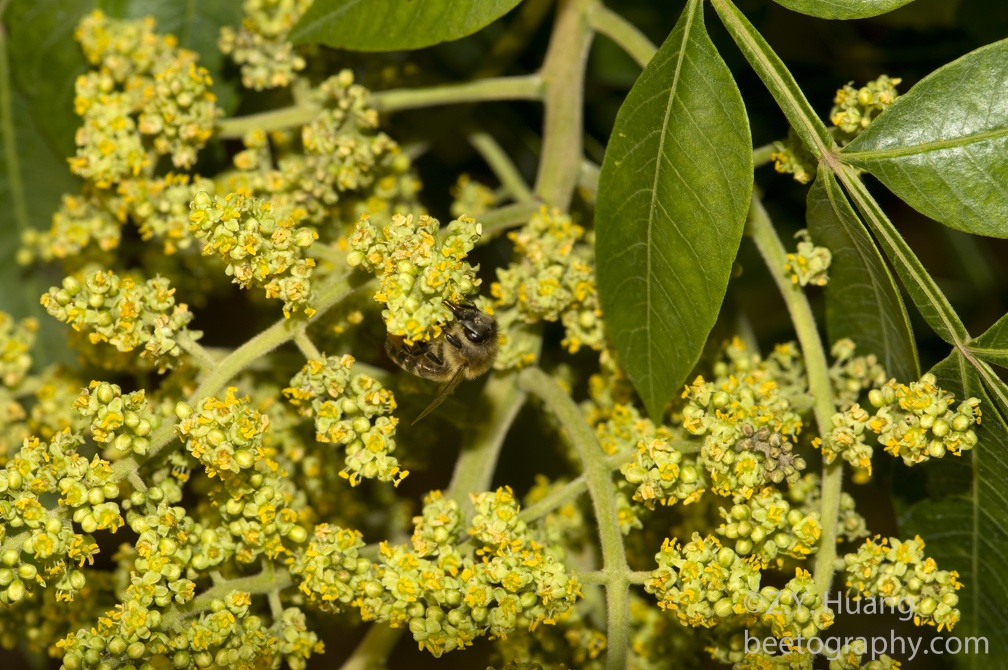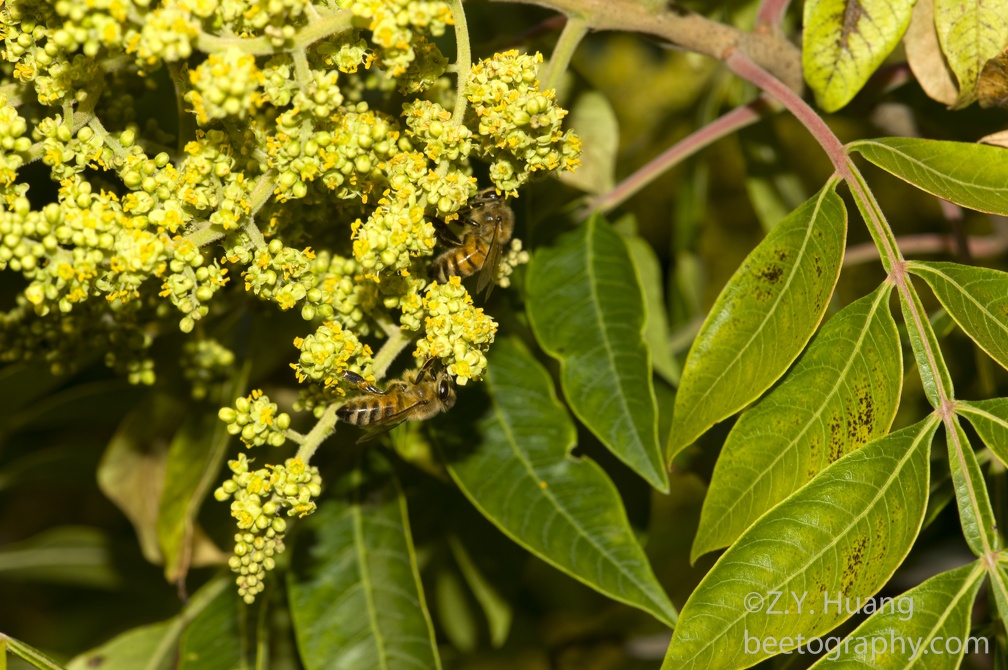| Family: | Anacardiaceae |
| Genus: | Rhus |
| Species: | R. copallinum |
| Common name: | Winged/shining/dwarf sumac, |
| ZBAS: | 9 (Zach’s bee attraction score) |
Winged sumac is a native plant in North America! It is great to have one that is native here since many that bloom in August are not (e.g. bee bee tree, Chinese sumac, seven son’s tree to name a few). It is a small tree growing up to 18 feet tall. It is often planted because it has lush green leaves during summer but changes colors in the fall. But it will also grow naturally after birds spread the seeds after eating the fruits, e.g. along the sides of a highway. Flowers are greenish yellow and highly attractive to honey bees, partly because very few other resources are available during August in Michigan. The plant is dioecious, meaning trees are either male or female and only female trees will produce the nice looking red fruits in late fall. I assume similar to staghorn sumac, these seed pods can also be used for smoker fuels for beekeepers.
1. These photos were taken on Aug 8, 2016, when I was invited to teach photography at the UM botanic garden. One can see that this honey bee has pollen on her pollen baskets (corbiculae), meaning the flowers can provide pollen.

2. This bee can be seen to be foraging for nectar with her proboscis probing small florets.

3. Two bees working at close range. The lower bee has a tiny amount of pollen. One can also see why the plant is names as “winged sumac” because there are small, wing-like protrusions between the leaflets on the compound leaf.

ZBAS*: Zach’s Bee Attraction Score. This is not supposed to be scientific but just based on my many years of observation and bee-shooting with my cameras. It might vary with location and season. 0: bees will never visit. 10: bees are crazy for it.
Please complete a brief survey at the end of this page. This should only take about 2 minutes. Please link to a post blog survey, which is anonymous and collects no personal information.

